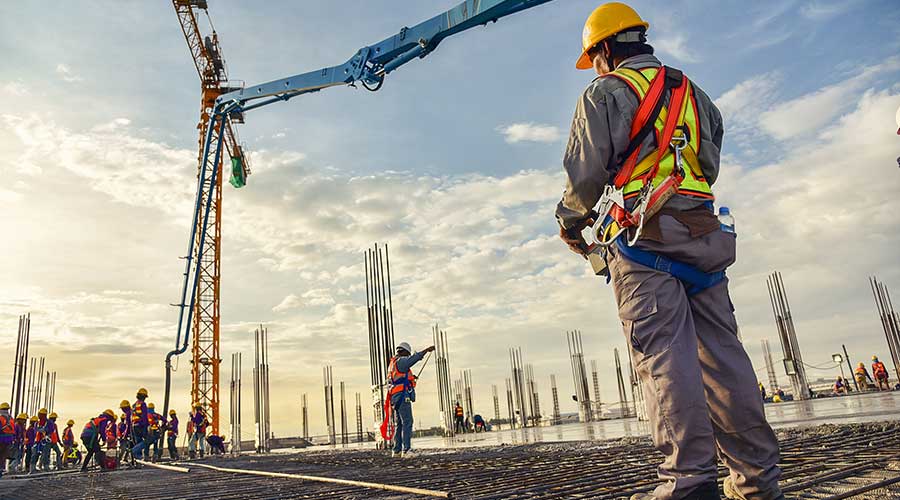As a $400 billion industry, healthcare construction is an expensive investment. Despite the cost, building new healthcare facilities remains a priority, meaning innovative and effective solutions are more essential than ever.
Many construction trends have emerged in the past couple of years to adapt to healthcare environment needs, but not all become best practices. One previously discussed trend that is becoming its own best practice is retail-to-healthcare – repurposing vacant retail locations to healthcare facilities.
When trending solutions prove effective following proper evaluation and strategic implementation, they can boost efficiency, lower costs and promote long-term success. When they fit this mold, it is often safe to cement them as best practices.
Healthcare systems are implementing these four best practices in facility construction.
Strategic supply chains. Supply chain disruptions and shortages continue to impact healthcare teams working on new construction projects, and leaders need to anticipate delays before they happen. Facilities that reduce reliance on external service contracts can eliminate supplier risk and better prepare for future supply chain challenges, shortages or crises.
Health systems that establish supplier relationship programs and regularly assess the performance of critical suppliers also can develop strong supply chain strategies to support construction and long-term resource sourcing. This benefit does not only affect the construction phase of a project. It is effective throughout a facility’s lifespan.
Innovative technologies. When it comes to innovative technology solutions in healthcare construction and design, a select few of the new offerings from recent years have proven to be useful and cost-effective. Investing in the right technological advances can have long-term payoffs for the facility, such as keeping up with a dynamic healthcare environment and meeting the needs of a community over time.
It is important to note that this does not always require investing in expensive new technologies. Facilities frequently use inexpensive or existing solutions in new ways to meet infectious disease prevention needs, support sustainability initiatives, overcome labor shortages and meet changing compliance standards, all while carrying out daily operations. Encouraging creative problem-solving can lead to exceptional results in healthcare construction that can help boost efficiency and create substantial impacts.
Patient-focused design. Proven design concepts, including natural light and smooth flooring, support the patient experience and improve health outcomes. By creating a calm and comfortable environment, evidence-based design principles ensure the right conditions for healing.
Certain elements, such as high air quality and barriers to prevent the spread of infections, also support wellness, while others like neutral colors and sound-absorbing materials promote a calm atmosphere. It might seem like a given to center the patient in healthcare construction, but it is key that this focus be active and continuous and not just occur at the beginning and end of the process.
Purposeful collaboration. Creating a successful healthcare environment requires a joint effort from healthcare construction and facilities management teams. These teams often work independently from one another instead of aligning the planning, design and construction stages with ongoing facilities maintenance.
When health systems connect these elements with emergency preparedness, environment of care and regulatory compliance, facilities are more likely to meet long-term goals, improve service outcomes and streamline communication. A unified planning, design and construction platform supports long-term facility success by aligning building standards and patient care goals.
For example, sustainability initiatives can start during facility construction if the healthcare team strategically incorporates environmentally conscious designs and processes. Teams also should collaborate on data-based risk assessments in order to build resilient facilities that will be able to serve the community during severe weather events or other emergencies. Depending on the location of the construction, leaders will need to consider the way climate change might impact the facility.
To meet demand and not break the bank, healthcare construction must continue to evolve. As new strategies emerge to cut costs and ensure more successful facilities, healthcare construction and leadership teams need to consider how to multiply efficiencies, determine the best investments and meet goals in every project. Those that make the biggest impact will remain best practices while other trends fall by the wayside.
Mike Wood is the vice president of planning, design and construction at Medxcel, an integrated facilities management organization focused on healthcare.

 Building Sustainable Healthcare for an Aging Population
Building Sustainable Healthcare for an Aging Population Froedtert ThedaCare Announces Opening of ThedaCare Medical Center-Oshkosh
Froedtert ThedaCare Announces Opening of ThedaCare Medical Center-Oshkosh Touchmark Acquires The Hacienda at Georgetown Senior Living Facility
Touchmark Acquires The Hacienda at Georgetown Senior Living Facility Contaminants Under Foot: A Closer Look at Patient Room Floors
Contaminants Under Foot: A Closer Look at Patient Room Floors Power Outages Largely Driven by Extreme Weather Events
Power Outages Largely Driven by Extreme Weather Events